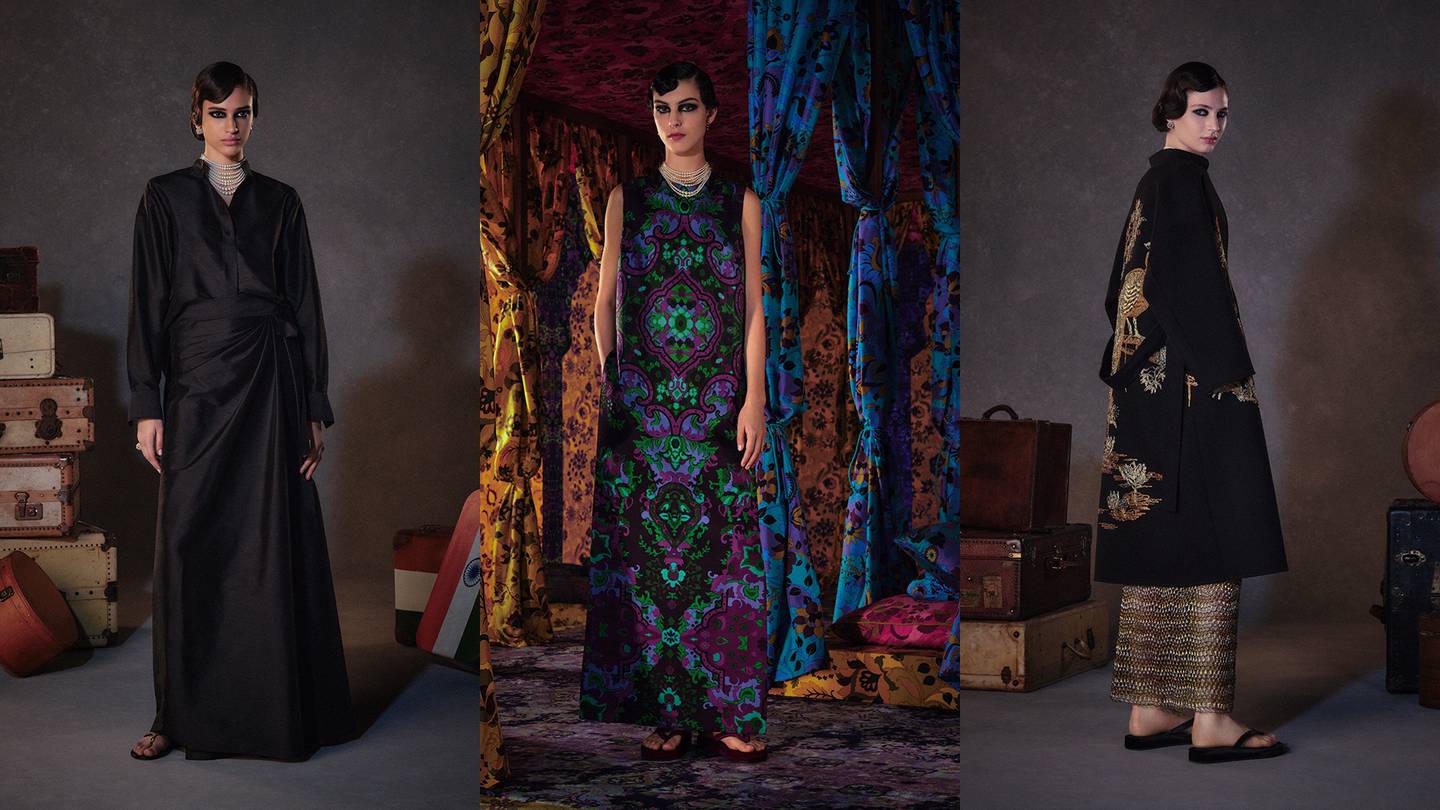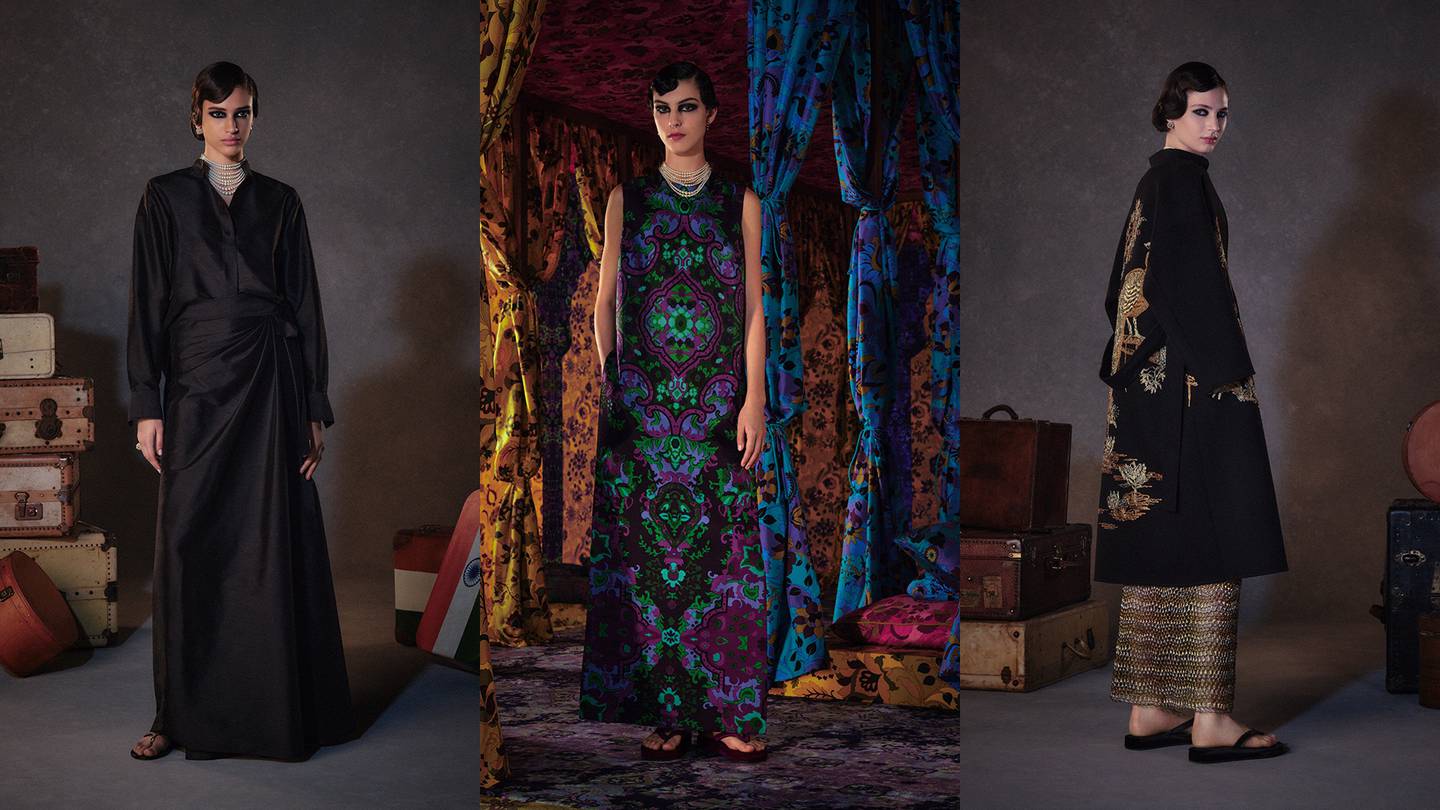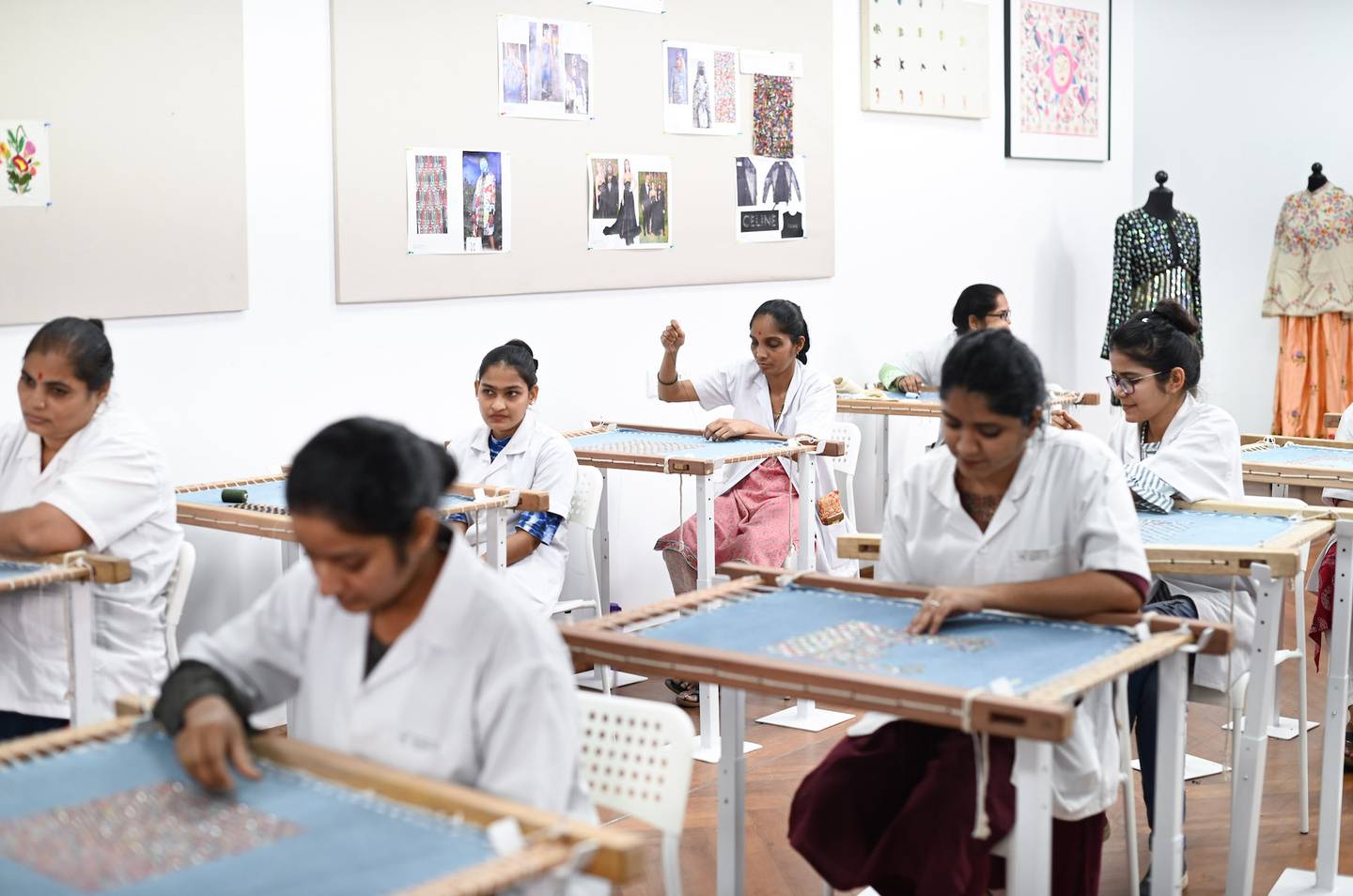
Dior is headed to India for its next fashion show.
On Mar. 30, creative director Maria Grazia Chiuri will present the brand’s 2023 pre-fall collection at the historic Gateway of India monument in Mumbai. The event will be the first time a European luxury megabrand has staged a major standalone show in the country.
The collection, which will be available in stores from late April, features silk dresses, evening coats and sari-inspired skirts that reference traditional Indian silhouettes. Some pieces are embellished with intricate embroidery by Chanakya, a Mumbai-based atelier and craftsmanship school for women. The atelier, led by Karishma Swali, has supplied surface ornamentation for a number of luxury brands and couture houses over the years and produced monumental set pieces for some of Chiuri’s Paris shows.
The far-flung setting is designed to highlight the role Chiuri’s ongoing collaboration with Chanakya continues to play within her work at Dior, the designer said. Several European luxury brands have tapped ateliers in India to do exquisite handwork for the catwalk, but some shroud their suppliers in secrecy while others have faced criticism for undervaluing artisans.
“For me to show in India means also to celebrate the heritage of India in embroidery and how important [it is] in the fashion world,” Chiuri told BoF. In recent years Dior’s parent company LVMH has opened many of its French ateliers to the public as part of a programme called Journées Particulières. Chiuri said she wanted to take that idea to “another country that is very important in the fashion system.”

A focus on global craftsmanship is part of Chiuri’s hit-making formula, which has propelled 76-year-old Dior to new heights, more than tripling annual revenues since her arrival to about €8.8 billion ($9.4 billion) last year, according HSBC estimates. In recent seasons, Chiuri has engaged with local artisans from around the world to inspire and even produce limited-edition designs for Dior’s cruise collections, which she has staged in Morocco, Greece and Spain.
Works created in partnership with Chanakya include immense embroidered panels designed by Judy Chicago as the backdrop for Dior’s Spring/Summer 2020 show.
The partnership with Chanakya also reflects Chiuri’s mission to evolve Dior into a brand that is not just feminine in its sensibility, but also feminist in its values: India’s garment-embellishing artisans, known as karigars, are traditionally male. Chanakya School of Craft’s mission to empower women from low-income groups with the skills to earn a livelihood in the industry resonates strongly with the feminist message that the designer — Dior’s first-ever female creative director — has worked to advance by collaborating with women artists, photographers, and craftspeople.
“It’s really a project of sisterhood,” Chiuri said.

The Mumbai outing makes business sense, too. Travelling shows have become a key tool for luxury brands to produce memorable marketing moments with the “wow”-factor to stand out on social media. They can also be a way for brands to activate key geographies, signalling a desire to deepen ties with a market and providing a chance to engage high-spending local clients. With luxury purchasing expected to slow in Western markets like the US and Europe this year, many brands are looking further afield for growth.
India, in particular, is seen as a country with high growth potential, with demand for luxury goods among Indians expected to explode over the next decade. Bain estimates luxury spending by Indian consumers will hit €25 to €30 billion by 2030, up from less than €8 billion last year, although the majority of that spend will happen abroad as India’s luxury sector remains challenged by limited retail infrastructure, high import duties and operational complexities ranging from a bureaucratic regulatory environment to investment constraints, which make it difficult for foreign brands to do business without a local partner.
The symbolic value of Dior staging a show at Mumbai’s Gateway of India monument could be significant, akin to when Fendi staged a fashion show on the Great Wall of China in 2007, a move that foreshadowed the importance of Chinese consumers to the luxury industry over the next decade.
For Chiuri, however, the motivation was more personal.
“Fashion is much more than 10 minutes on the runway. It’s all the people that work together at this incredible project,” she said. “I am doing this show for love of this country, and how much they support my creativity. It is really something very personal.”
Editor’s note: This article was updated on March 14 to clarify that Chanakya did not collaborate with Dior on its Autumn/Winter 2024 show set. LVMH is part of a group of investors who, together, hold a minority interest in The Business of Fashion. All investors have signed shareholder’s documentation guaranteeing BoF’s complete editorial independence.



